Desalination relies upon energy & capital intense processes
Our Full Spectrum Solar© Thermal Forced Rapid Desalination process mimics nature through its use of subtle natural forces to greatly reduce the severity of conditions needed. Two fundamental proprietary innovations:
• First, we have developed patented methods that concentrate & collect solar + longwave radiation as high-temperature thermal energy delivered via solid-state “heat pipe” to Thermal Battery. No working fluid.
• Unlike solar, Longwave (aka “Atmospheric” or “Terrestrial”) present on dark days; a worldwide average of 342 W/m2 24x7.
• As a result, we collect 1.5-2x additional energy/m2/day—baseload 24x7.
• Stored thermal energy drives a heat engine (no Boiler), delivering electric + heat & cooling, providing all energy needed to produce pure water in remote locations without external energy. Second, we have developed a new approach to thermal desalination. Saltwater mists develop when waves crash onshore. Dry winds rapidly evaporate microdroplets into water vapor at mild temperature (less than 60°C).
We have learned to Mimic and Accelerate this Rapid Evaporation while eliminating boiling water & high pressures.
Instead, we inject warm nanobubbles of air into seawater and then disrupt the normal stasis with ultrasonic energy. They implode and violently recombine into microbubbles. Energized by the effects of the nanobubble system’s state change, these energetic high surface area bubbles quickly rise to the surface, creating an aerosol of micro-water droplets above the surface.
These buoyant droplets are drawn into a dry, warm air stream and rapidly evaporate, precipitating out salt crystals. They are quickly cooled with a thermoacoustic chiller, condensing into freshwater.
We calculate that these effects accelerate the evaporation process 1,000x and reduce specific energy by 1-2 orders of magnitude.
• Affordable, reliable, highly efficient, and compact heat-integrated package (3x20’ containers)
• System & process architecture reduces process complexity, time-to-commissioning, OPEX; enhanced robustness, reliability, performance, efficiency.
• Logistics, service, maintenance: monthly micro-filter cleaning, daily coarse debris removal from incoming seawater filter, disposition of 17,500kg of brine with 5-7% water content.
• Spare parts: Ultrasonic generator yearly; 10-year supply furnished. Replacement of molecular sieves after 60 months @10/replacement supplied; replacement filters for Stirling Engine after 100,000 hours, two additional sets supplied. Occasional replacement of damaged micro material filters 10 supplied.
• Local support: Full interactive online or video training program with contact to 24-hour help desk service can be made available, spares can be air freighted in 5-15 days worldwide.
Four stages w/ two key sets of proprietary subsystem/component innovations embodied in heat-integrated subsystems.
Stage One, Full Spectrum Solar Thermal©: based on patented use of gold layer on parabolic mirrors to reflect & concentrate Longwave (3,800-12,000+ nm) radiation and UV/Visible/Near-Infrared. Longwave originates as “visible” solar either absorbed by clouds, dust, etc., before reaching the earth or being absorbed by the earth and re-radiated. The average LW is approximately 342
W/m2 24 hours/day (total=8.2 kWh/m2/day thermal @1750C), present under almost all atmospheric conditions. LW is “baseload” energy. Perryman Thermal Batteries (“PTB”) provide backup for bad *solar* days and level solar variability from day/night cycle, dust, weather, etc.
Incoming radiation is concentrated & harvested by black body light trap w/95-98.4% efficiency & conducted to PTB via solid-state.
“conduit,” stored as sensible energy in heated metal within a refractory-insulated containment providing minimal (1-2%/month) loss until dispatched.
Thermal energy is dispatched to turn a Brayton Cycle heat engine (7 kWe mil-spec Stirling engine), replacing thermal energy from fuel combustion. Testing on a retrofitted 1.5 MW Kawasaki NG combustion turbine, energy consumption was reduced by 25%. 1750C thermal is adequate to drive high-efficiency combined cycle configurations where the power-to-thermal ratio favorable.
This subsystem fits into one 20 foot oceangoing container, an off-grid capable power island for Combined Cooling, Heat & Power generator.
It is notable that—unlike conventional CHP—this system can flexibly deliver “prime” thermal energy unconstrained by the generator efficiency. Unlike conventional CSP, this is a compact packaged system. Stage Two, Water Micro-droplet generation
Inspired by seaside saltwater mist—a persistent, low-hanging aerosol of micro-droplets of seawater—created by waves breaking under certain atmospheric conditions at the seaside.
As a trained process chemist working for the Government of PNG 1980-84, Virgil Perryman observed that this phenomenon occurs at atmospheric pressure and mild temperatures, without the high energies of distillation and RO desalination. He successfully exploited this effect to produce potable water for seven islands using ingenuity and “tin can engineering.”
Since then, he has experimented and learned from extensive and sophisticated efforts–especially by the Japanese and Vietnamese—to use nanobubble generators to aerate the water for their fish farms. Subsequently, available commercially from multiple vendors, Virgil acquired several nanobubble generators and has experimented with various combinations of temperatures, pressure, etc., needed to produce nanobubbles and generate the seawater mist amenable to Rapid Forced Evaporation.
Seawater Aerosol generation. Warm (50-60C) nanobubbles of air are stable in seawater within a wide range of conditions. It has been shown that it is possible to trigger the explosive collapse of these bubbles, which simultaneously produce larger microbubbles of air and then micro-droplets of water. The pressure and buoyancy of the air bubbles drive the water droplets to the water surface, where they breach the surface, forming a buoyant seawater mist that will continue rising.
The mist rises through the second section, an easily permeable metal molecular filter that removes plastics, organics, petroleum products, etc.


